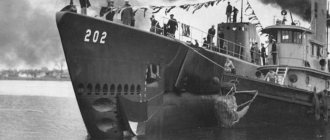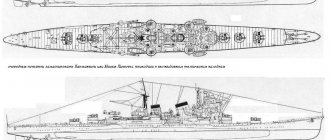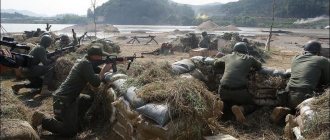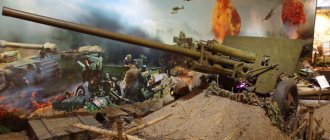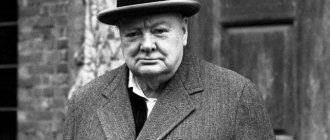Most often, when it comes to tanks of the Second World War, historians remember the Soviet T-34, the American Sherman or the German Tiger. Not many people know that Italian engineers, despite the modest capabilities of the industry, produced very good samples.
It is worth noting that only two enterprises were responsible for the production of Italian tanks, which did not compete with each other, as was the case in Germany, but worked together. One plant produced engines and transmissions, while engineers from another plant were responsible for weapons.
In my opinion, this approach was far from perfect, since they were unable to create a coherent, unified model. But still, they had tanks that deserve our attention.
Story
The Italian army arose in 1861 - simultaneously with the unification into the Italian Kingdom of the independent Italian states of the Apennine Peninsula that existed at that time: Sardinia, the Kingdoms of Naples and Sicily, Lombardy, the Grand Duchy of Tuscany, the Duchies of Parma and Modena. Since its creation, the army has actively participated in military operations, including colonial and two world wars, local conflicts and invasions. She played a significant role in the division of Africa (1885-1914) and the formation of colonial states. To protect the conquered territories, colonial troops appeared in the Italian army, recruited mainly from aborigines - residents of Eritrea and Somalia; by 1940 the number reached 256,000.
When the country joined NATO, its armed forces began to take part in operations carried out by the Alliance. Among them: “Allied Force” (a series of air strikes on the territory of the former Yugoslavia), “Resolute Support” (providing assistance to the Afghan government), “Allied Defender” (NATO intervention in the civil war in Libya).
Building up Italy's military power has become a priority since the early 20s of the 20th century: Italians were called up for military service for a year and a half instead of 8 months. Benito Mussolini's rise to power in 1922 led to the popularization of fascism in the country. The result of the foreign policy pursued by the Duce, the stated goal of which was the restoration of the Holy Roman Empire, was the conclusion of a military alliance with Nazi Germany. So the Italian army became involved in hostilities, and later itself initiated a war - with France and Great Britain. During World War II, the development of the Italian army accelerated.
Despite the fact that the result of the aggression was the loss of colonies and capitulation in 1943, participation in the war brought Italy “dividends”: a powerful fleet, including several dozen submarines and almost two hundred warships.
In the mid-20th century, the development of Italy's military-industrial complex continued; this became possible thanks to the country's accession to NATO in 1949. Today, Italy’s military potential is significant: it has a lot of military equipment of its own production: tanks created on the basis of the German Leopards, military aircraft (fighters, attack aircraft, transport aircraft, etc.) and helicopters, mountain howitzers, anti-aircraft guns, as well as small arms (automatic rifles, pistols, machine guns, etc.). At the same time, the level of combat training of soldiers and officers is considered low. At the beginning of the last century, the Italian army repeatedly suffered defeats on military fronts (significant losses in clashes with Austria, complete defeat by Austro-German troops in 1917, colossal losses in North Africa), but this did not greatly affect the improvement of the professional qualities of the soldiers of the Italian armed forces strength in the future.
Semovente da 75/18
This model is an Italian assault gun, which was assembled on the basis of an obsolete Carro Armato M14/41 tank.
Thanks to the efforts of engineers, this self-propelled gun received a more powerful engine, which did not correct the lack of mobility. Within 2 years the cars rolled off the assembly line. After the Allied invasion of Sicily, the Germans took control of the production of self-propelled guns, making their contribution.
Self-propelled gun Semovente da 75/18
Semovente da 75/18 had 50 mm of frontal armor and an excellent 75 mm gun. Among the shortcomings, one can note the outdated base, which was then modified by German engineers. True, this did not allow the Italian self-propelled guns to even approach the efficiency of the Soviet SU-85 and SU-100.
Structure
The Italian army includes ground, naval and air forces. Since 2001, another type of troops has been added to them - the carabinieri. Total number of personnel: about 150,000 people.
Ground troops
The ground forces are formed from several divisions and brigades: mountain infantry, armored, etc. There are parachute and cavalry brigades, signalmen, and air defense troops. The Bersaglieri, or riflemen, deserve special mention - a special branch of the army, the elite infantry, distinguished by high mobility. Since 2005, only professional soldiers and volunteers have been accepted into the infantry forces of the Italian Army.
It is armed with Italian tanks and other armored vehicles; artillery and air defense systems - mainly foreign-made; more than 300 helicopters, a fifth of them are combat helicopters. There are more than 550 old German tanks in storage.
Fleet
The Italian fleet has traditionally, since the beginning of World War II, been ahead of other types of the country's armed forces in terms of development . Its potential, including production, scientific and technical, is very great; All combat vessels used are built in our own shipyards. These include the latest submarines, destroyers and unique aircraft carriers equipped with air defense systems and anti-ship missiles.
Air Force
It is officially believed that the national aviation of Italy arose in 1923. However, at the beginning of the century, Italy used aircraft in the war with Turkey, becoming the first country in the world to use them for combat operations. Italian pilots took part in the Spanish Civil War, the war with Ethiopia, and the First World War. By the beginning of World War II, the Italian army had more than 3,000 aircraft in service. Nowadays, their number has decreased significantly, but continues to be quite impressive.
Carabinieri
Carabinieri troops recently became part of the Italian army. They have double subordination - to the Ministry of Defense and the Ministry of Internal Affairs, since the carabinieri also perform police functions.
The carabinieri units include helicopter pilots, divers, dog handlers, and orderlies; a special task force whose responsibilities include the fight against organized crime.
The Carabinieri are distinguished by better training - combat and psychological - than representatives of other types of troops.
P26/40
German engineers called the P26/40 a heavy tank, although its combat characteristics corresponded to the Soviet T-34 or the German T-4.
Italian engineers had been working on creating their own heavy tanks for a long time, but the first sample was only sent in the summer of 1943. The tank had a 75 mm cannon, good armor of 40-60 mm, and excellent driving characteristics.
Tank P26/40 in Poland
There have been no documented cases of Italian tank crews meeting with Soviet colleagues. However, judging by the reports of the Italians themselves, the P26/40 was not particularly reliable.
As a result, Italian engineers assembled about a hundred tanks, of which only 60 received engines.
Uniform and ranks
Unlike Russia, where only two types of military ranks are established - military and naval, in the Italian army each type of military has its own ranks. The exception is the ranks of the air force: they almost completely correspond to the names adopted for the ground forces. The main differences: the absence of the rank of major general in the Air Force (literally translated from Italian - “brigadier general”). There are also peculiarities in the designation of senior army ranks: in the ground forces the term generale is used, in aviation - comandante.
The rank of "corporal" (between private and corporal) exists only in the ground forces. There are no corporals or corporals in the fleet, only sailors and junior specialists (corresponding to the rank of senior corporal in other branches of the military). Russian petty officers and warrant officers correspond to sergeant majors.
The rank of junior officers is represented by three ranks. The captain of the ground forces and the captain of the gendarmerie correspond to the squadron commander and the naval lieutenant commander. There is no rank of “lieutenant” in the navy; in the navy it is replaced by “midshipman”. There are also three senior ranks.
It is curious that naval ranks contain the names of types of ships: for example, the rank of “captain of the 3rd rank” literally sounds like “corvette captain,” and a higher rank is “frigate captain.”
The most original names are those of the carabinieri, or gendarmes; This is exactly how it is customary to translate the Italian carabiniere into Russian. Only junior and senior officers of the gendarmerie and ground forces bear the same ranks. In addition, the Carabinieri lack two out of five general ranks. There are only three higher ranks: the inspector general of the district, the second commander (or acting general) and the general.
Like all armies in the world, the Italian uses camouflage uniforms for field operations. The Italian military acquired its own colors in 1992; before that, designs developed for the US Department of Defense were used. Among the standard equipment, it is worth noting a camouflage poncho with a hood, which, if necessary, can be used as an awning. It is equipped with a warm lining, also dual-purpose, since it can serve as a blanket.
In cold weather, Italian military personnel may wear wool turtleneck sweaters with a zipper.
As for shoes, lightweight boots for wearing in hot climates deserve special mention . Their lower part, the boot itself, is made of durable leather; high top – soft, made of fabric and suede. Special eyelet openings serve for ventilation. Additional protection against sand or small stones getting into your boots is provided by nylon gaiters, which are worn over trousers and shoes.
The dress uniform partially contains accessories left over from earlier times; So, for the Carabinieri these are cocked hats with a plume. Almost every unit wears its own variety of uniform, which also differs depending on the status of the special event. For example, only soldiers of the Sardinian mechanized grenadier brigade, created in 1831, wear tall fur hats, similar to those worn by English guards, to participate in parades.
Links[edit]
- "Archival copy". Archived from the original on April 6, 2022. Retrieved 6 March 2022.CS1 maint: archived copy as title (link)
- [ https://web.archive.org/web/20140225212537/https://www.vecio.it/cms/index.php/artiglieria/342-obice-skoda-10017-mod14-e-16
- https://it.wikibooks.org/wiki/Armi_avanzate_della_Seconda_Guerra_Mondiale/Appendice_6#Italia_2
- [https://navweaps.com/Weapons/WNIT_35-50_m1939.htm
- [https://navweaps.com/Weapons/WNIT_47-50_m1909.htm
Our days: reforms
Since 2012, the Italian army has been reformed. The goal is to create a new model of the Armed Forces and balanced expenses. To begin with, personnel was significantly reduced, including command staff, and investments in modernizing the army were increased. Unused weapons and property should be liquidated or sold, and modern, more efficient ones will be put into service instead of outdated models.
The time for change for the Italian army came back in 2007, when the leadership of the Italian Republic abolished universal conscription. However, if the country enters hostilities, conscription may be resumed.
In the new army model, the emphasis is on professionals and those who want to join the army voluntarily. Currently, contract soldiers serve for 5 years, and subsequently can extend their contract twice – each time for one or two years. At the end of your service, you can get a job in the police or fire departments - former military personnel are given priority for this.
In order to attract the interest of experienced military personnel and increase the effectiveness of combat personnel, the government of the country has significantly increased the amount of monthly monetary remuneration; Today the salary of an Italian military man reaches 2500 Euros per month. There is a campaign to recruit women into the army; today they can occupy positions at any level, with almost no restrictions.
Machine guns [edit]
- Breda Mod. 5S 6.5 mm heavy machine gun
- Breda Mod. Light machine gun 5G 6.5 mm
- Breda 30 6.5 mm light machine gun
- Breda M31 (licensed copy of the 13.2 mm Hotchkiss machine gun)
- Breda 37 8mm heavy machine gun
- 8 mm Breda 38 tank machine gun
- FM 24/29 (formerly French)
- Machine gun Fiat – Revelli Modello 1914 6.5 mm
- Fiat – Revelli Modello 1935 8 mm Breda machine gun
- SIA Mod. 1918 6.5 mm heavy machine gun
- 7.7 mm Breda-SAFAT machine gun
- Breda-SAFAT 12.7 mm machine gun
- Machine gun Scotti – Isotta Fraschini Modello 1933 12.7 mm
Data
- Troops recruited from representatives of local tribes are usually called "askari" (literally "soldier");
- The Eritrean battalions remained loyal to Italy until its surrender; the rest of the mercenaries deserted;
- The colonial troops of the Italian army included cavalry units that used camels instead of horses; they were called "mecharistia";
- At the beginning of the last century, the Italian army fought in Abyssinia, Turkey, Spain, Albania and Ethiopia;
- After 1940, Italian troops invaded Greece and Yugoslavia, took part in battles in France, Africa, and the USSR;
- In recent history, the Italian army fought in Yugoslavia, Afghanistan, Iraq and Libya;
- The Italian Navy includes more than 60 military vessels , including two unique aircraft carriers that have no analogues in Western Europe: they are equipped with short-range air defense systems and anti-ship missiles;
- Italian military bases store 50 nuclear bombs for the US Air Force; another 20 of the same bombs are intended for use by the Italian army;
- The duties of the carabinieri from the division of special units include: protection of the environment, health and labor, the fight against counterfeiters, the protection of ancient monuments, control of food production standards;
- The Italian Army still has a cuirassier regiment, the Guard of Honor of the President of the Italian Republic. When participating in parades, they can wear historical cuirasses and helmets with feathers, and always white leggings;
- The Carabinieri, as an elite type of military force, are required to constantly improve their physical fitness and professional skills, including improving fire and mountain training.
Anti-aircraft weapons[edit]
| Model | Caliber | Effective height | From | Number of produced | Weight, kg | rate of fire, rpm | A comment |
| Breda mod. 31 year | 13.2 mm | 1000 | 1929 | ? | 47,5 | 400 | Used on command vehicles, a licensed copy of the 13.2 mm Hotchkiss machine gun |
| Cannone-Mitragliera da 20/77 (Scotty) | 20 mm | 2000 | 1940 | 500 | 227,5 | 250 | designed as an aircraft cannon, built by Swiss Oerlikon |
| Cannone-Mitragliera da 20/65 modello 35 (Breda) | 20 mm | 2000 | 1935 | ? | 330 | 240 | twin mount, main Italian light anti-aircraft/anti-tank gun |
| Breda 37/54 mod. 32 | 37 mm | 3500 | 1934 | ? | 5000 | 120 | naval gun with stabilizer |
| Breda 37/54 mod. 38 | 37 mm | 3500 | 1938 | ? | 4300 | 120 | double-barreled ground version, without stabilizer |
| Breda 37/54 mod. 39 | 37 mm | 3500 | 1939 | ? | 1500 | 120 | Ground version with recoil damper |
| Breda 37/54 mod. 40 | 37 mm | 3500 | 1940 | ? | 312,5 | 120 | upgraded version with recoil suppressor |
| 2-pounder QF naval gun (40/39 Vickers-Terni model 1915) | 40 mm | 3960 | 1917 | 50+ | 711 | 67 | imported and licensed production of the pompom pistol |
| Ansaldo [3] Cannone da 65/64 modello 39 | 65 mm | 5000 | 1939 | 115 | ? | 20 | |
| Cannone da 75/46 CA model 34 | 75 mm | 8500 | 1935 | 318 | 4405 | 15 | Used on Semovente 75/46 as an anti-tank rifle |
| Cannone da 75/50 | 75 mm | 9200 | 1939 | ? | 4150 | 15 | Captured by the Czech army in 1939. |
| 76/40 model 1916 | 76.2 mm | 5500 | 1916 | 492 | 1676 | 14 | used in fixed air defense positions since 1933. |
| 76/45 Mod 1911 RM | 76.2 mm | 6000 | 1911 | 312 | 2204 | 25 | licensed version "76 mm Mle 1911 Schneider" |
| Gun da 90/53 mod. 1939 | 90 mm | 11300 | 1939 | 539 | 8950 | 19 | Used on Semovente 90/53 as an anti-tank rifle |
| Gun da 90/50 [4] mod. 1939 | 90 mm | 10800 | 1939 | 56 | 18750 | 12 | navalized Cannone yes 90/53 version |
| 102/35 mod. 1914 | 101.6 mm | 5700 | 1914 | 110 | 1220 | 7 | used in the navy and on armored trains, and on 102/35 on the SPA 9000 SPG |
| 120/27 OTO 1924 [5] | 120 mm | 5500 | 1924 | 5 | ? | 9 | removed from submarines, reused in Messina AA Battery |
All calibers of anti-aircraft guns were also mounted on dual-purpose trucks (assault and anti-aircraft artillery).
